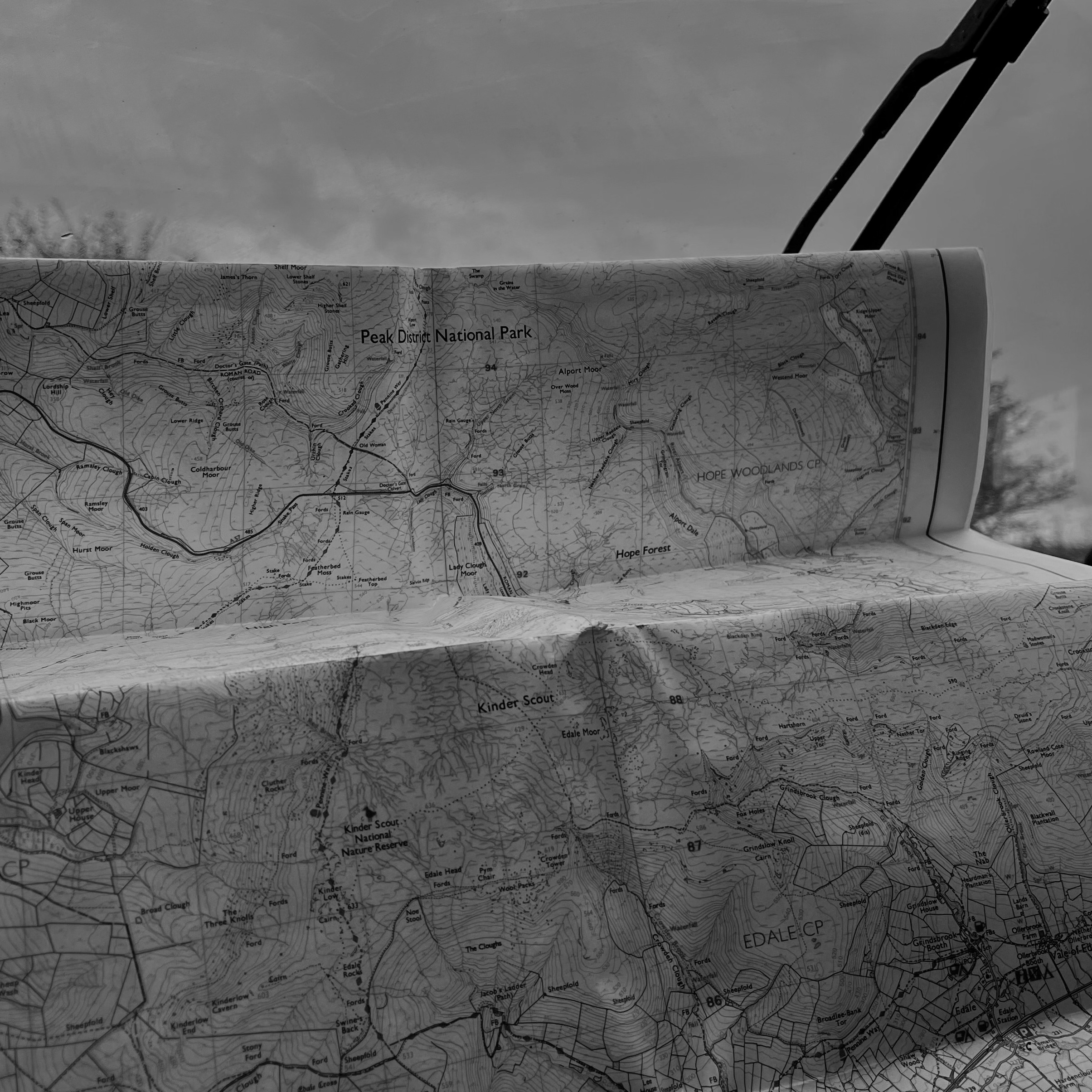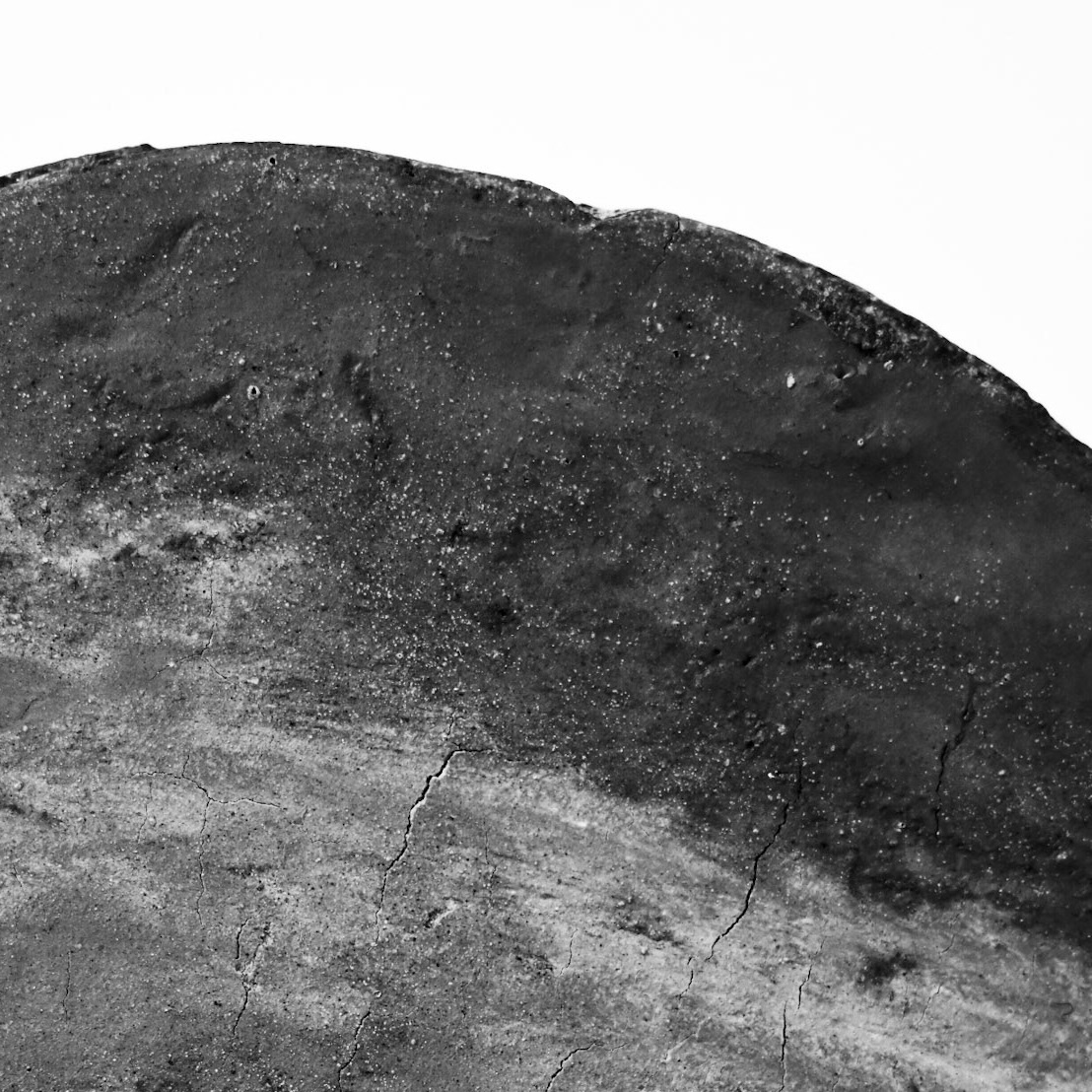Secondary research is a big part of my development of this project. Through exhibitions, artists and designers working in similar styles and the variety of work and processes that I come across through my research, I am gaining a much broader, resolved practice.
Since doing a placement at Manchester Craft and Design Centre last year as part of my study abroad and placement year, I feel I have become more in-the-know about the creative happenings in Manchester. From attending more open studios, galleries and events, both small student-led ones and larger community ones, I have improved my networking skills and awareness of the arts scene in the North. This has been very beneficial for me, as by attending these events, I have got to meet lots of different artists working in multiple mediums, which has in turn led to great networking opportunities and collaborations.
Being a part of the creative arts scene in Greater Manchester and working and living around other emerging creatives is, for me, a vital way of getting my craft into the wider community and thinking of how my practice fits in externally rather than just in the uni environment.
I have had the chance to have my work in exhibitions and events in Manchester, such as being approached to exhibit my work at an event which was organised by recent graduates in central Manchester. I will be taking my work down to New Designers in London to represent Craft, which is an exciting opportunity to put my practice out to different audiences.
Due to my practice's ethos being site-specific and locality-based, exhibiting my work in different contexts is something which I have questioned a fair bit. My work shows the reasons behind creating as locally and sustainably as possible, using local, natural processes and materials. Exhibiting this in locations such as a large, high-emission city like London, which is a long way away from the Peak District and is the opposite environment, could cause some questions of ethical reasoning. However, it is my belief that by bringing my practice to these juxtaposing environments, I am investigating the power of my material even further. I am inviting the wider public to understand more about the powers and beauties of nature, in the hopes that my project encapsulates the benefits and possibilities of working outdoors.
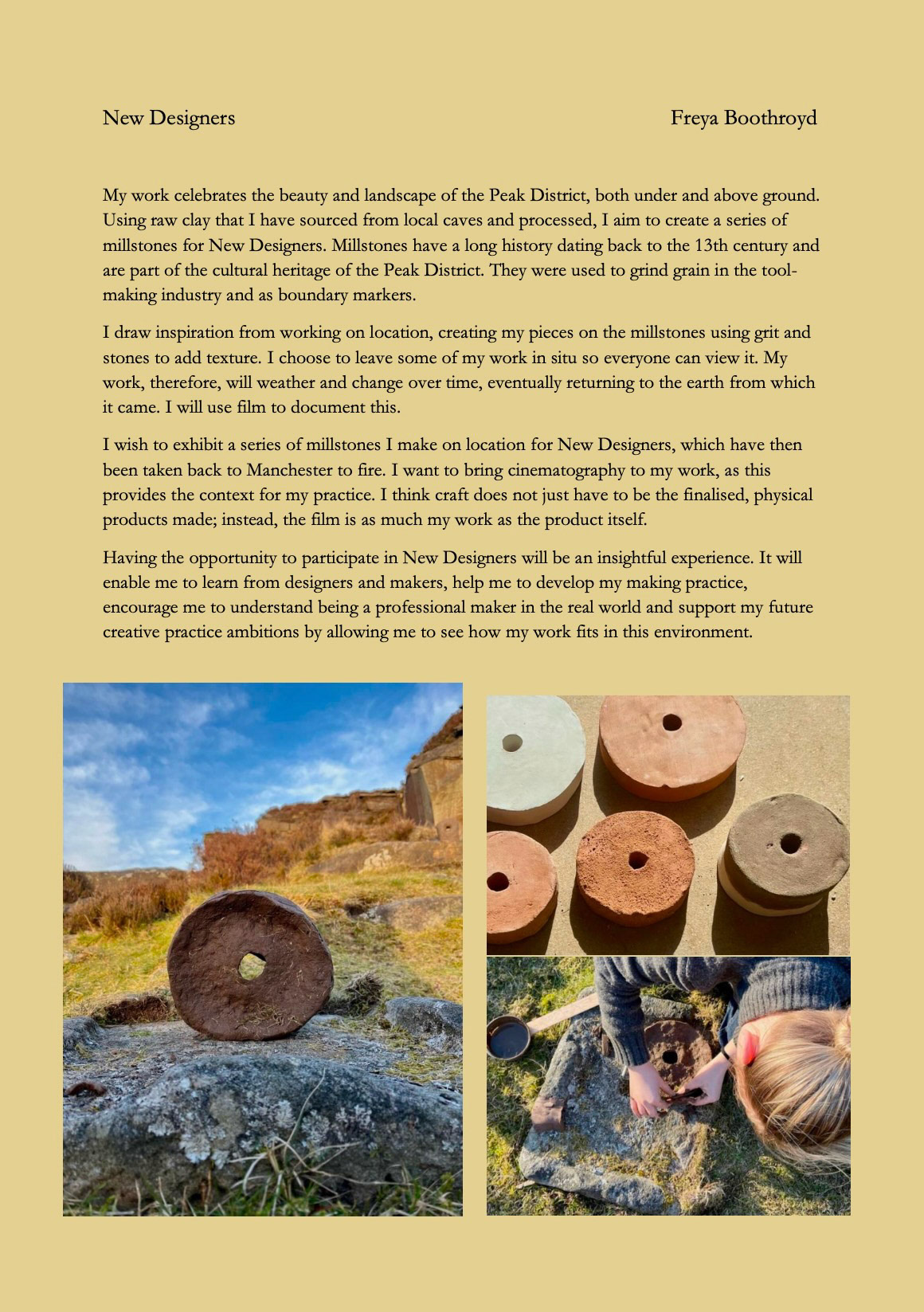
New Designers proposal

New Designers 2025, which I will be showing my work in in July
Collect, somerset house, 2025
Visiting Collect in London aided my thinking about my contextual design practice. It made me more aware of the types of pricing that this market of designers sold for and enabled me to think more in-depth about the different ways of exhibiting work, seeing what was successful and what I thought didn't work.
Collect also made me realise that this way of exhibiting and presenting my work did not suit my style. I think I was aware of this before visiting. However, I am even more aware that this environment does not work for my craft style. I found Collect too pretentious and upmarket for my work, and because it differs from the traditional style of craft, it would not be suitable for me to aspire to this.
Below are photos that I believe work and don't work regarding curation design. The metalwork knives made by Hugo Byrne are successful, due to the way they are presented, with a wooden back and a map of the location inspired by the work. I feel that this style of curation suits well for the way I see my work being curated for the degree show, due to the way that the locality of the pieces is being presented and how the natural way of working is showing through.
In my opinion, the curation of the work below was unsuccessful because of the business of the plinth and the height of the presented work. It is a ceramic work made by Darren Emenau, titled Abrasion that I was interested in finding out more about; however, the way that it was displayed, alongside lots of other people that the same gallery was representing, I found that this work got lost in the space and therefore didn't work well in the space that it was being shown.
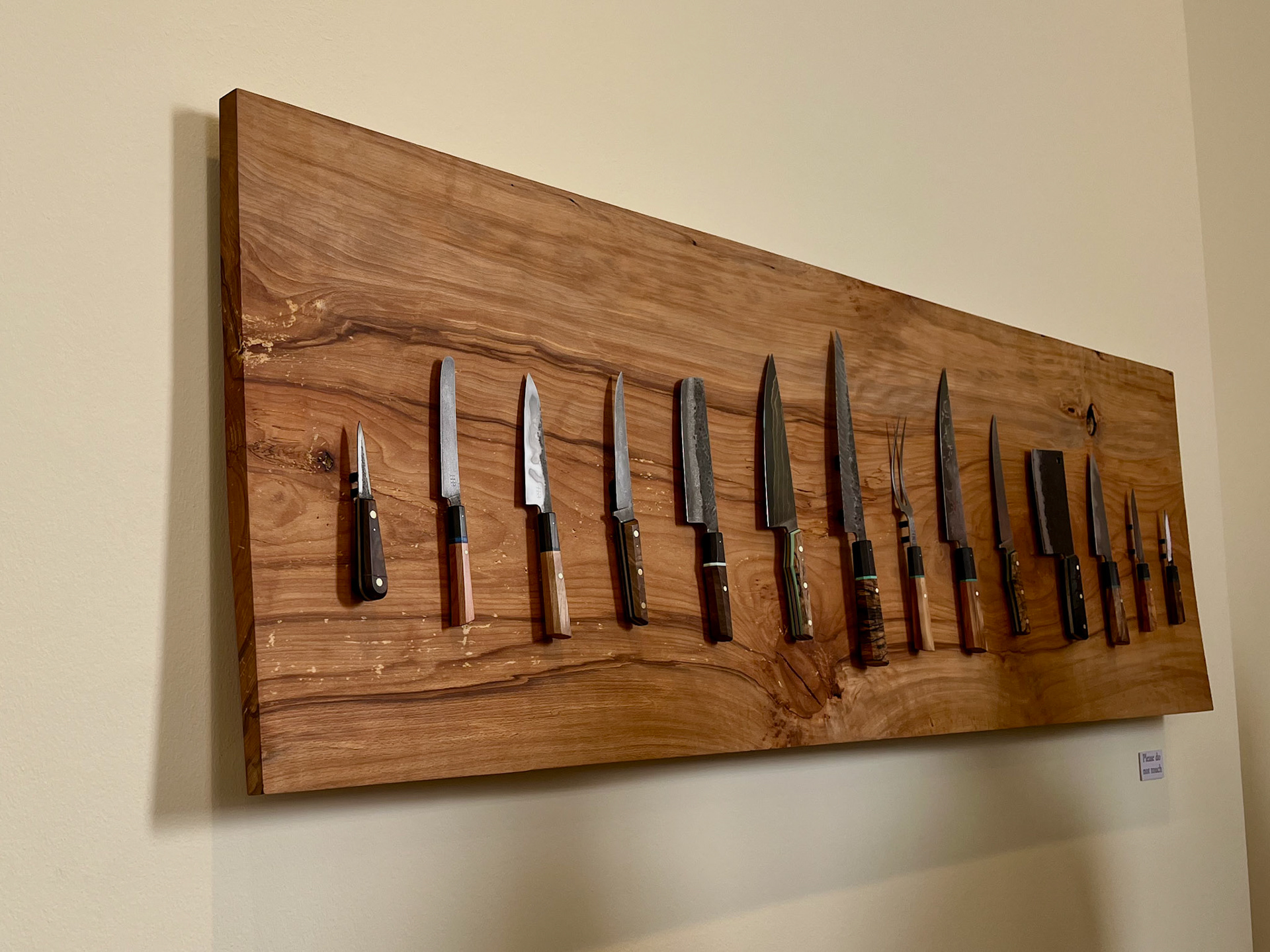
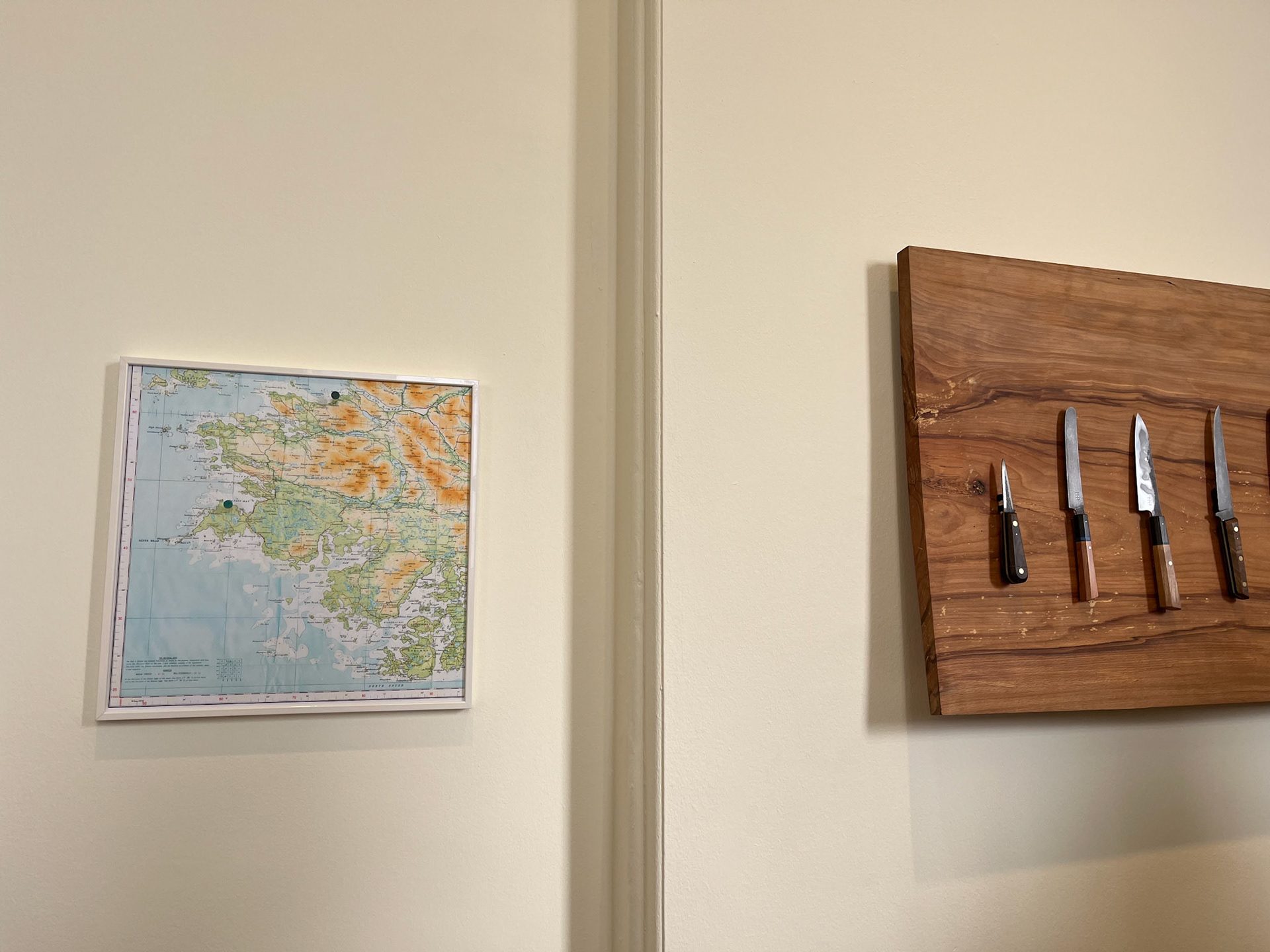

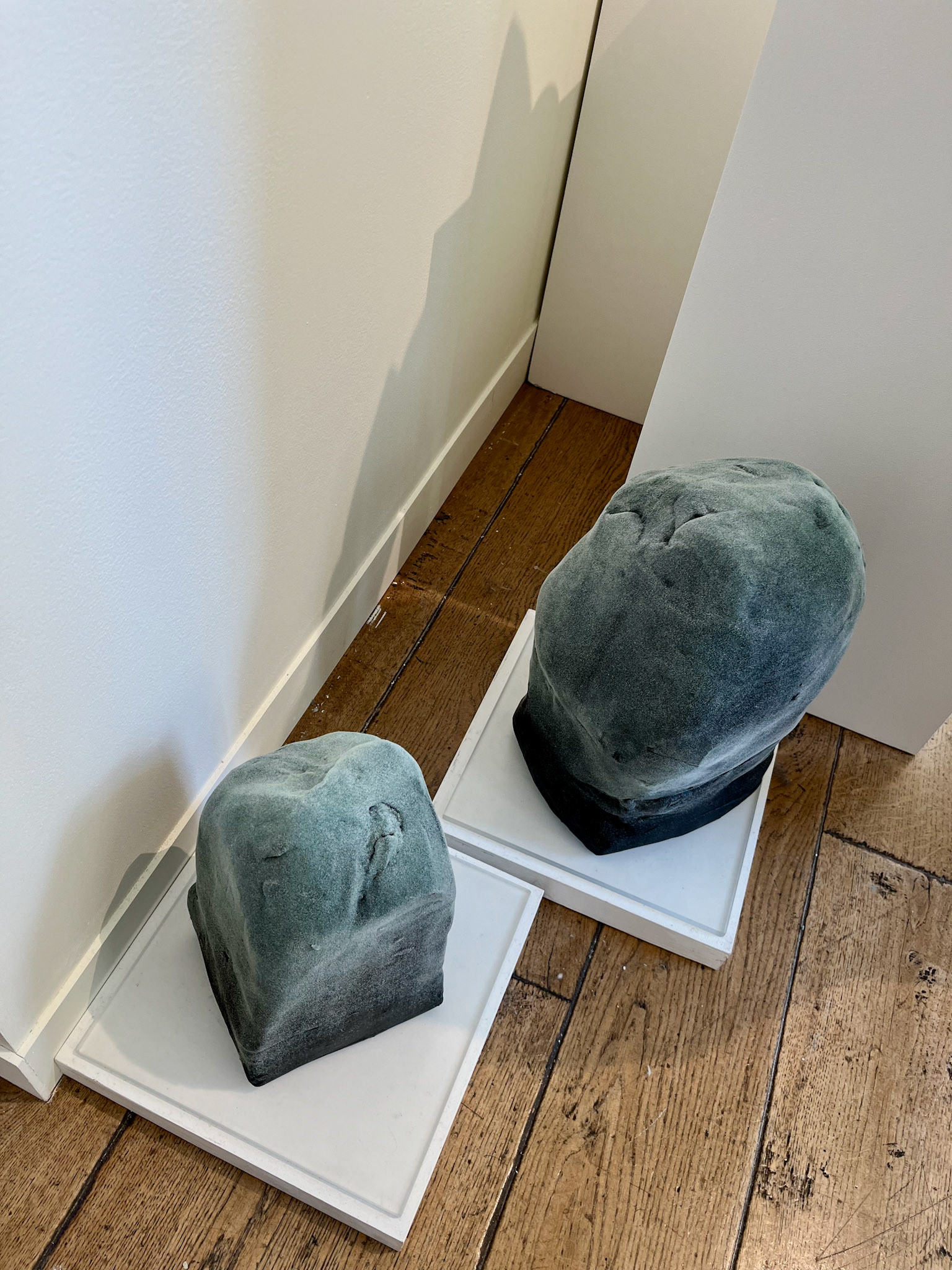
Soil, Somerset house, 2025
Also, during the same visit to London to see Collect, I spent the afternoon at the Soil exhibition at Somerset House. This exhibition was invaluable to my design practice. I was in awe of how contextually relevant it was to get inspiration for this project, my vertical gallery project, and how I see myself as a designer.
Soil exhibition was a varied mix of work styles, all revolving around the relationship of soil and human interaction with the earth. It was great to see so many different ways of exhibiting nature-based work in one space, and I got a lot of new inspiration about how I see my work fitting and existing in this environment.
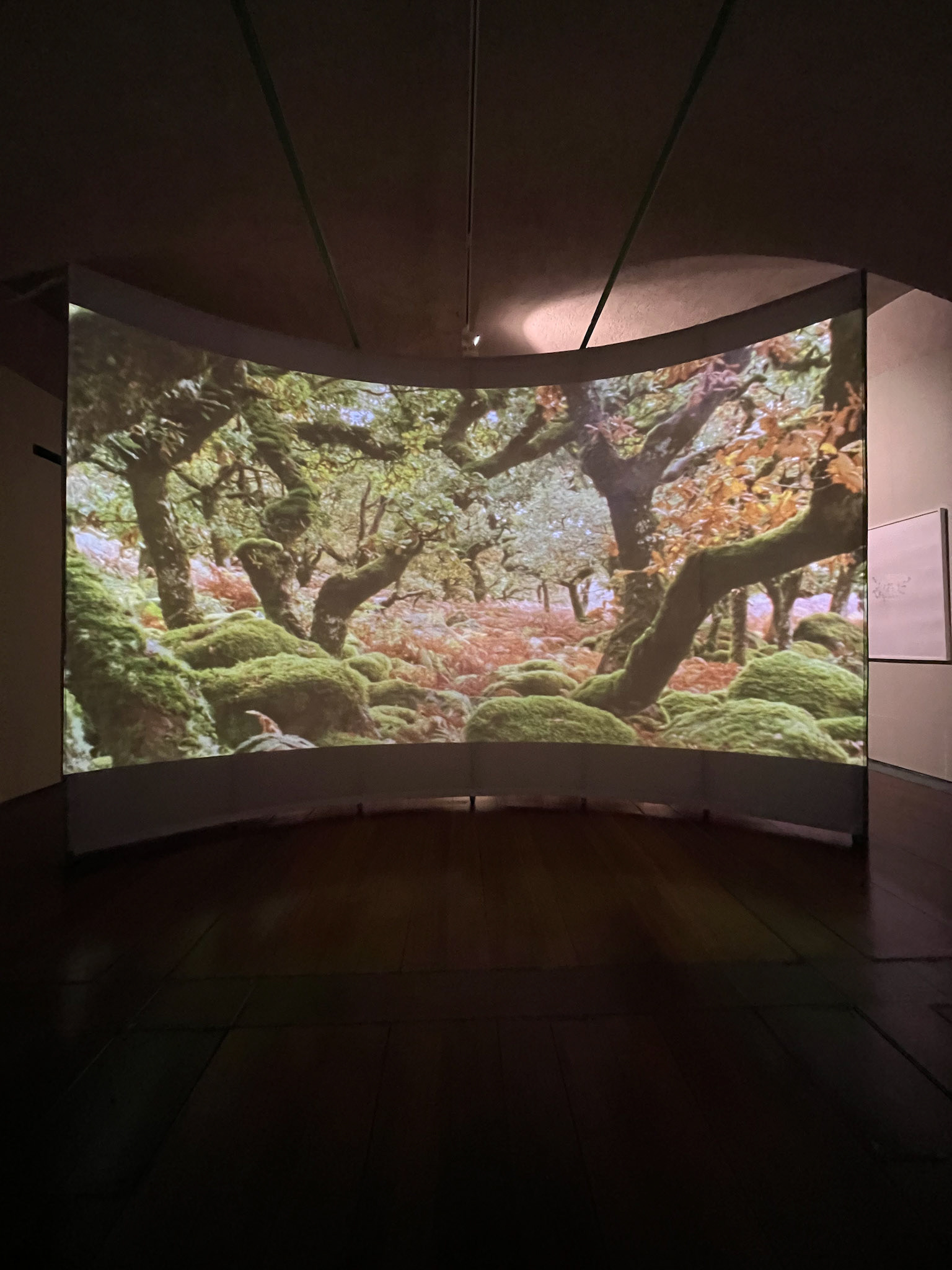
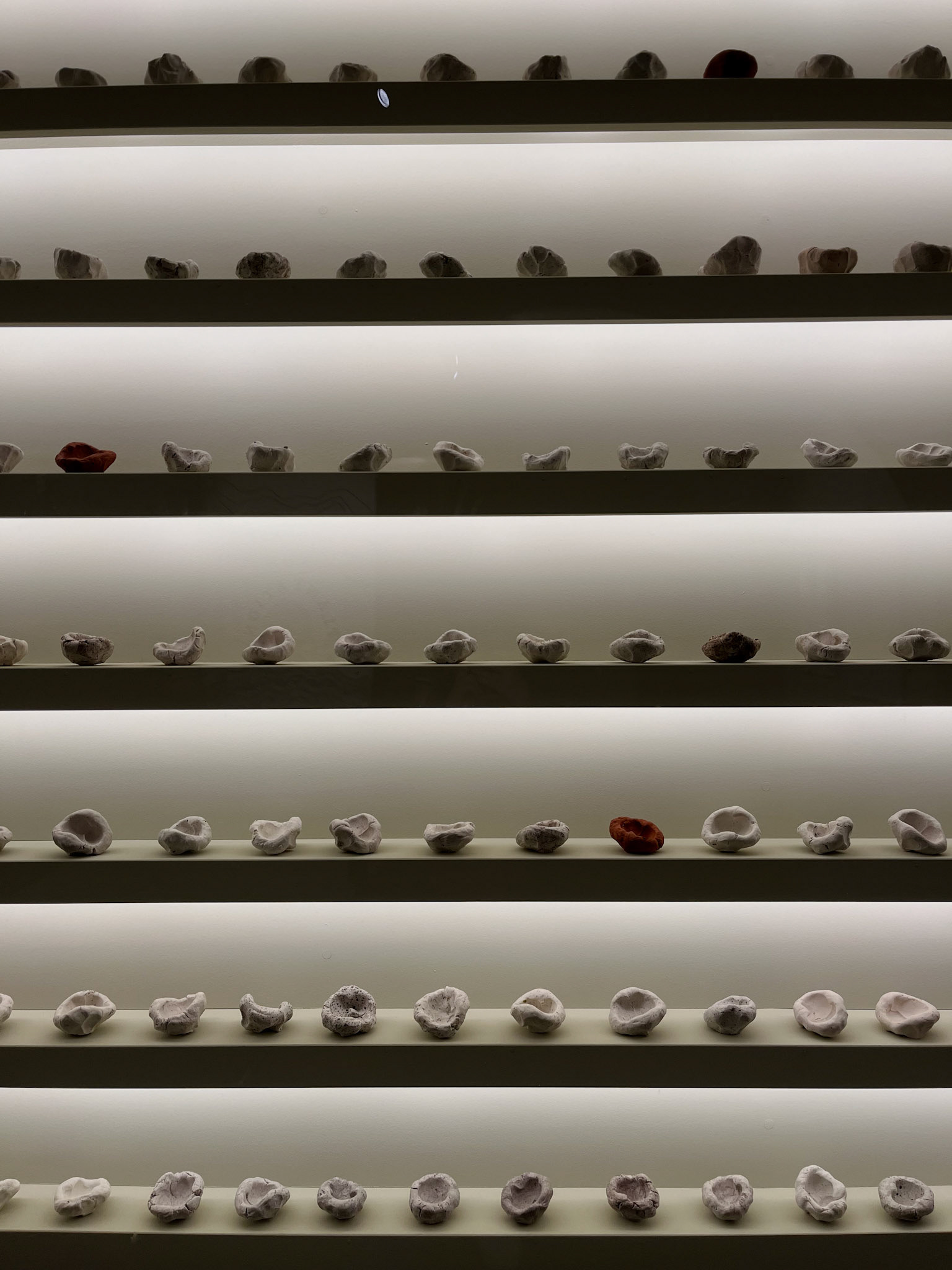


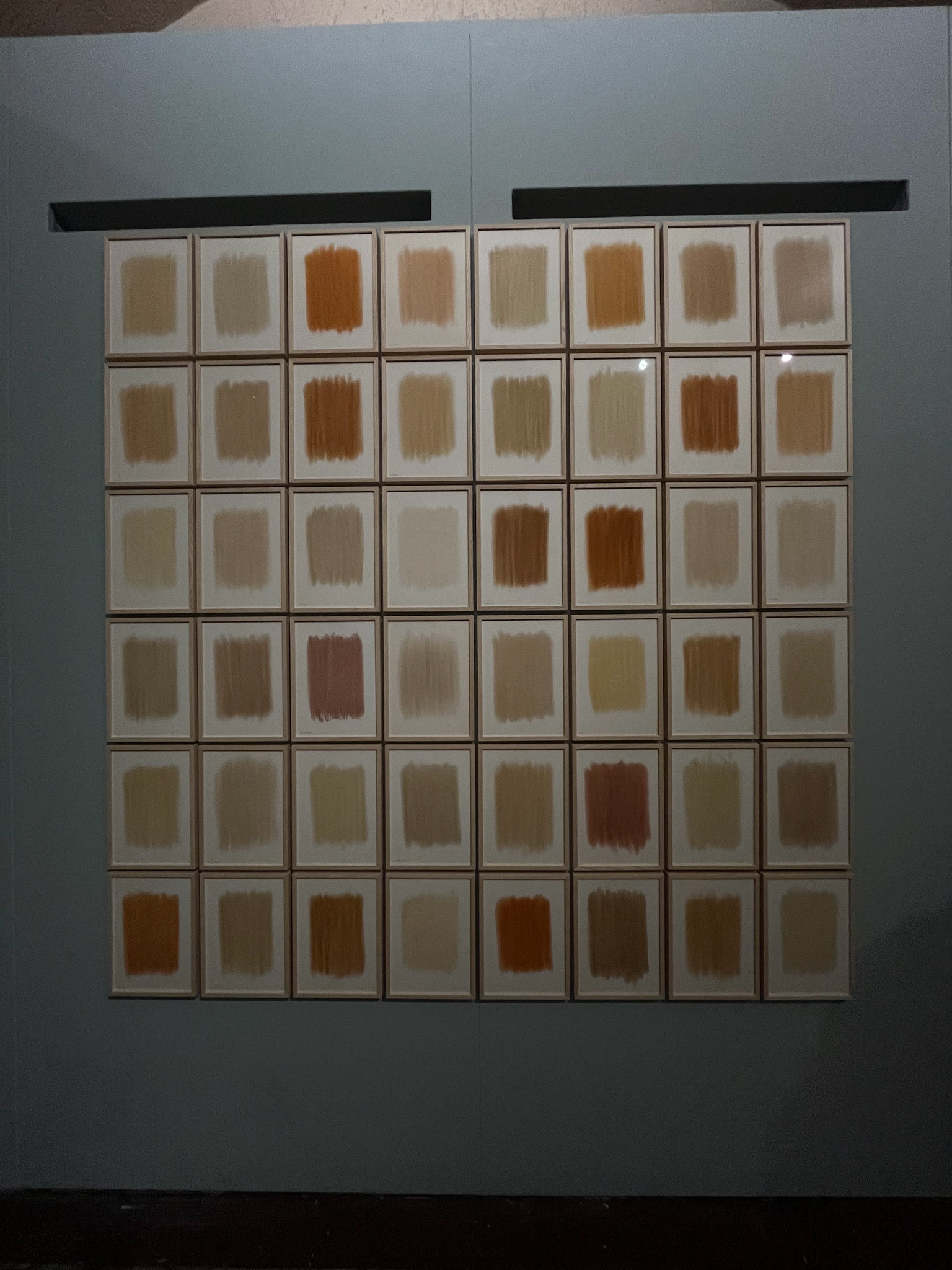
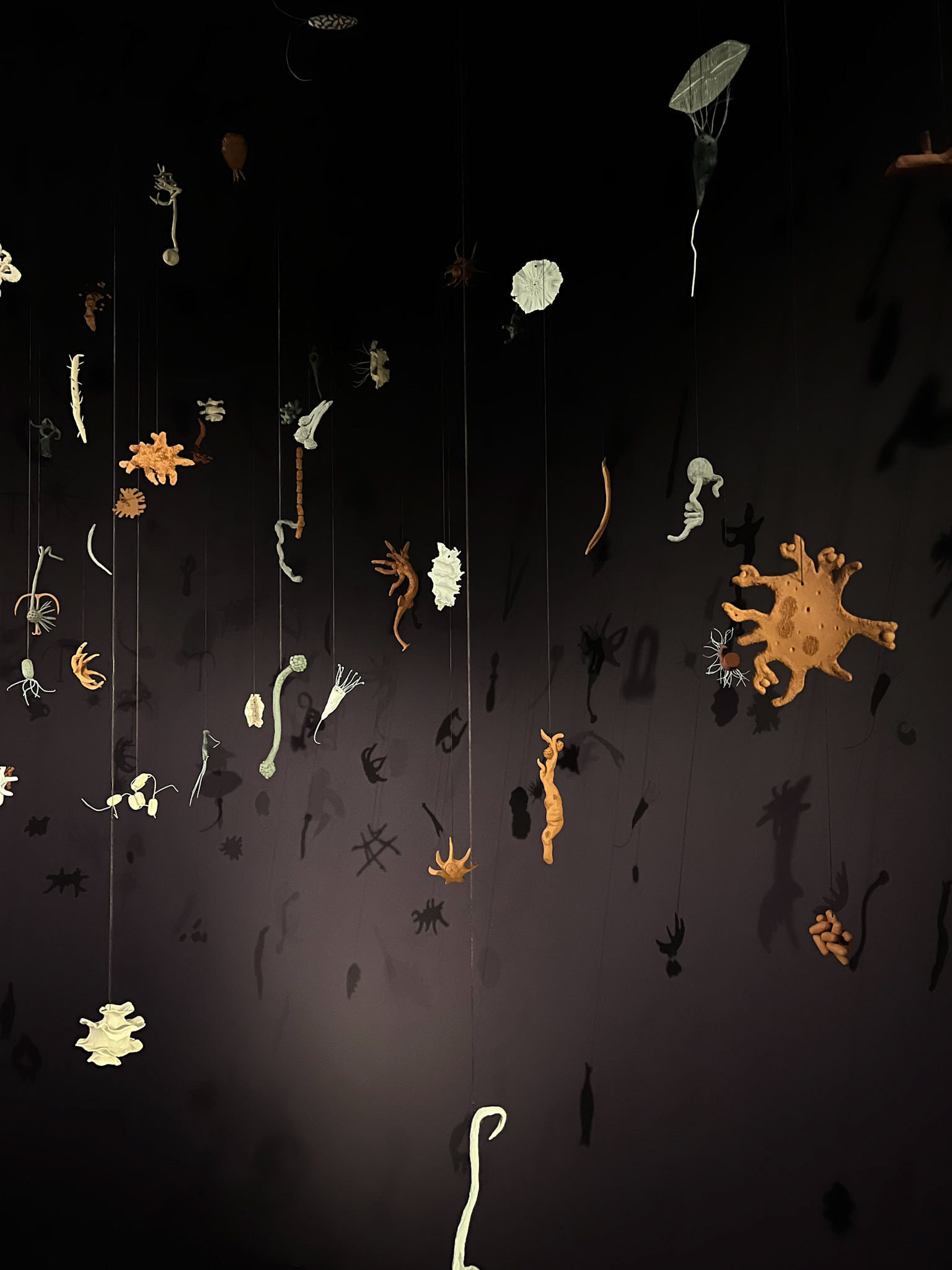
Slab research
Slabs are often seen as a simple, straightforward technique for building sculptures and bigger forms. At the start of this unit, I had in mind that I should also do it this way, building up my clay into literal, structural forms. However, I realised that this is not how I enjoy working and that, for me, my skills and craft of ceramics are conceptual processes behind the clay itself. Going back to the simple slab and refining my skills and knowledge of the clay itself, how my hands interact with it, and allowing the clay to take control is the true essence of my craft. It is the development of the material by conversing with the clay, tending to it, and examining all its forms and movements.
Looking into artists such as the few below, it is this refined, repetitive technical consideration of how clay takes on form. How does the clay react to glazes, and how do slightly different shapes of the builds come together to form a collective? By themselves, each slab could get lost and not be as effective when displayed or photographed. However, the number presented, the curated body of work, and the colour and shape combinations make the work successful. This is something I am considering in my development, as I need to consider how I curate my slabs and which ones I am pairing together, thinking about the differences between the colours, shapes and sizes.
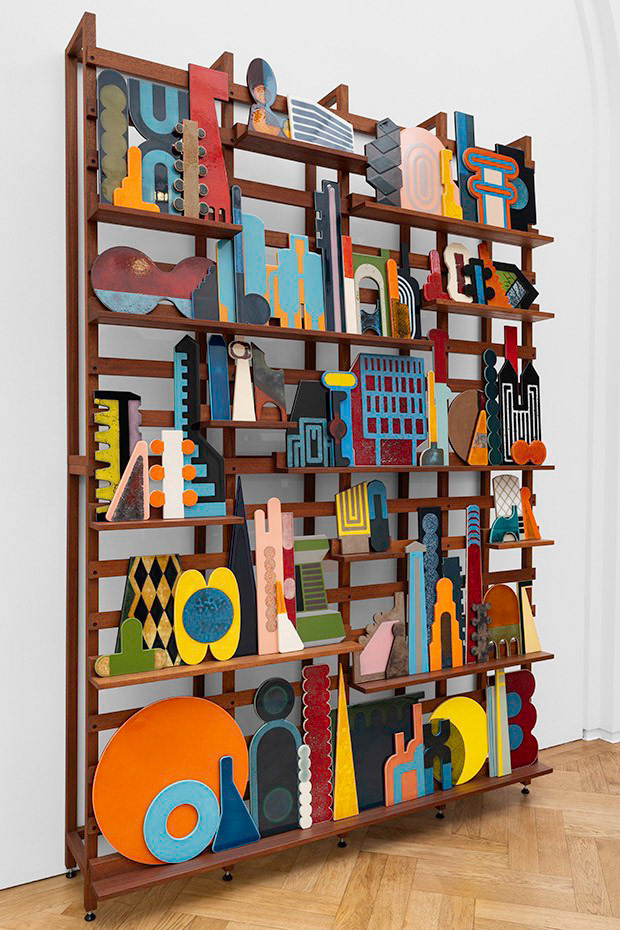
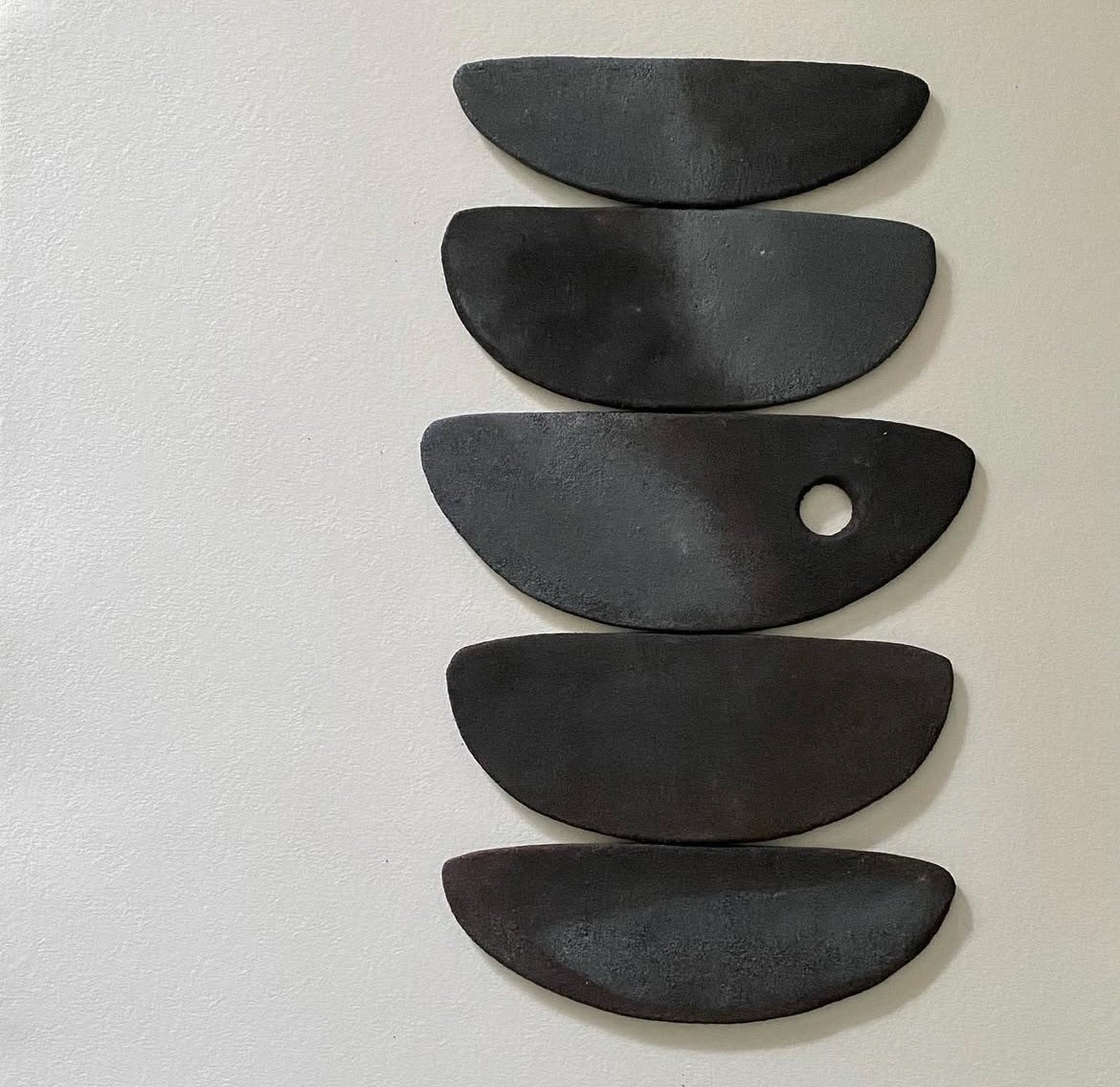
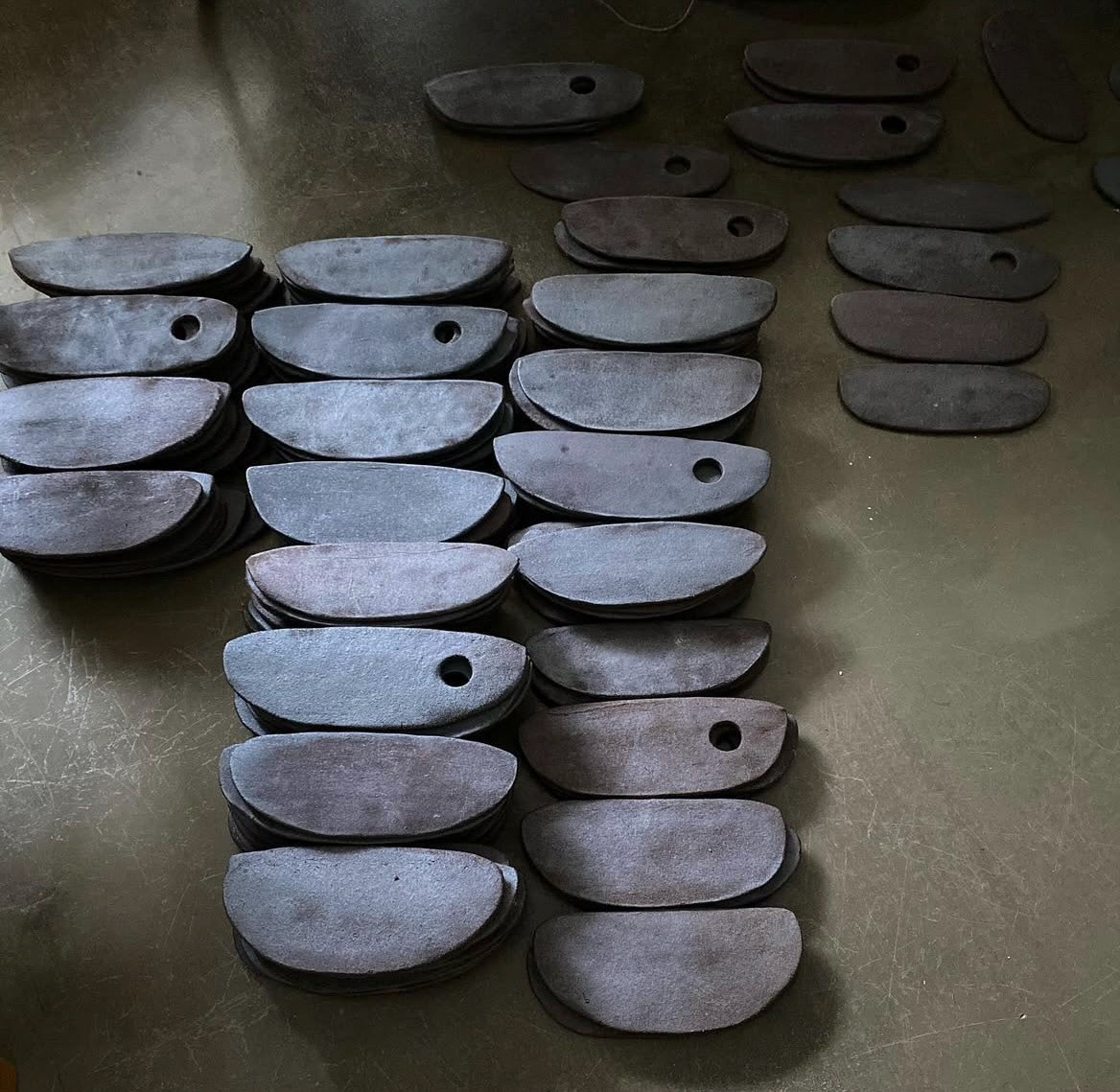
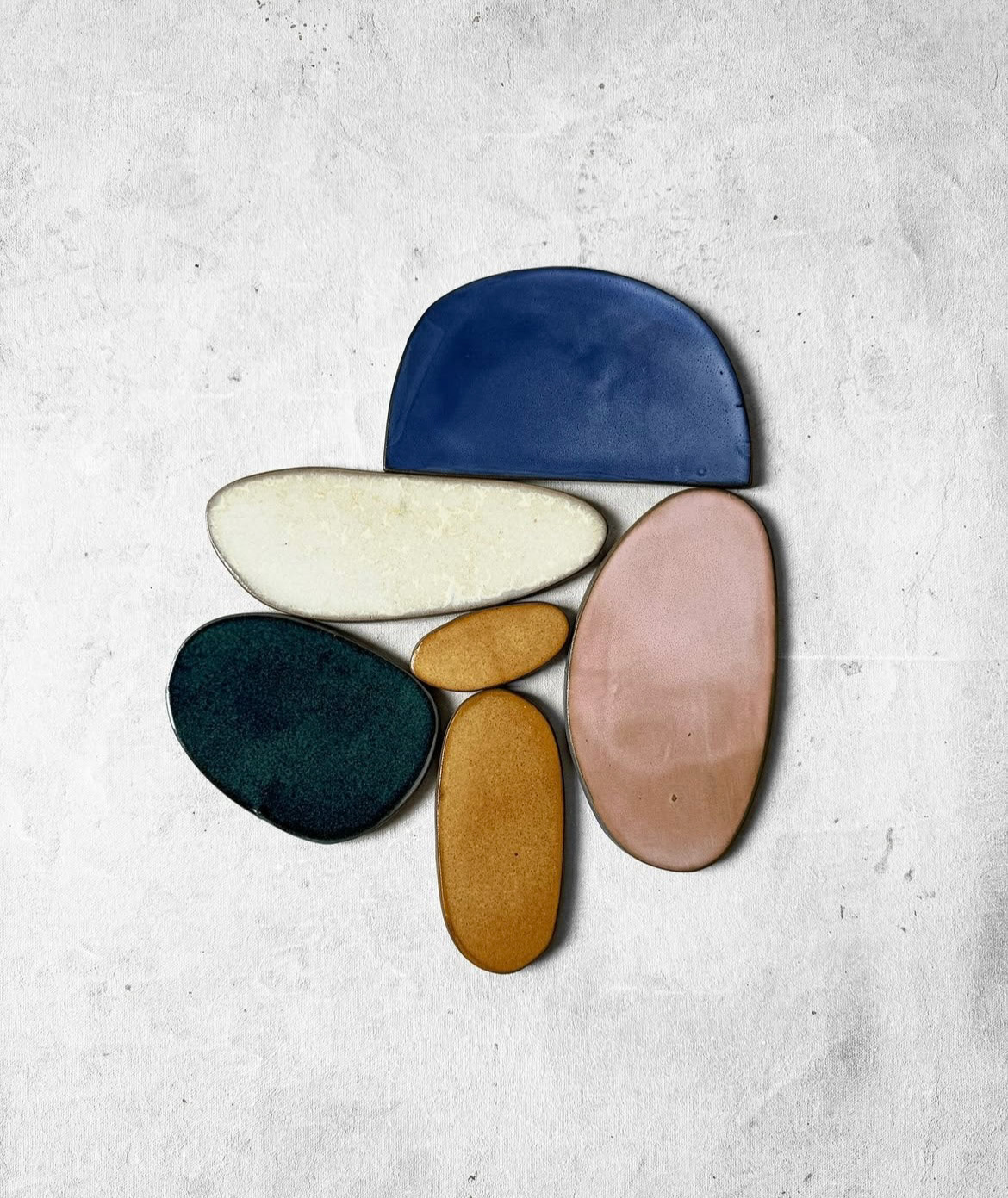
Alison Cooke
Taking inspiration from my DC3 report, one of the artist influences that has inspired my recent making has been Alison Cooke. Her project, Tin Mine Clay, was a factor in my decision to change the direction of my making. The way that Cooke displays her clay work in the form of slabs, quite simply yet letting the clay take control and show off, inspires me that making does not have to take the form of very complicated forms and building sculptures when the importance is in the quality of the clay.
When thinking about how I see my work being displayed, I am less inclined to display my slabs on a large, long table, as I feel like this doesn't provide the right context for my work, and when I am thinking about the curation, it is important to me that everything links to the desired projects context.
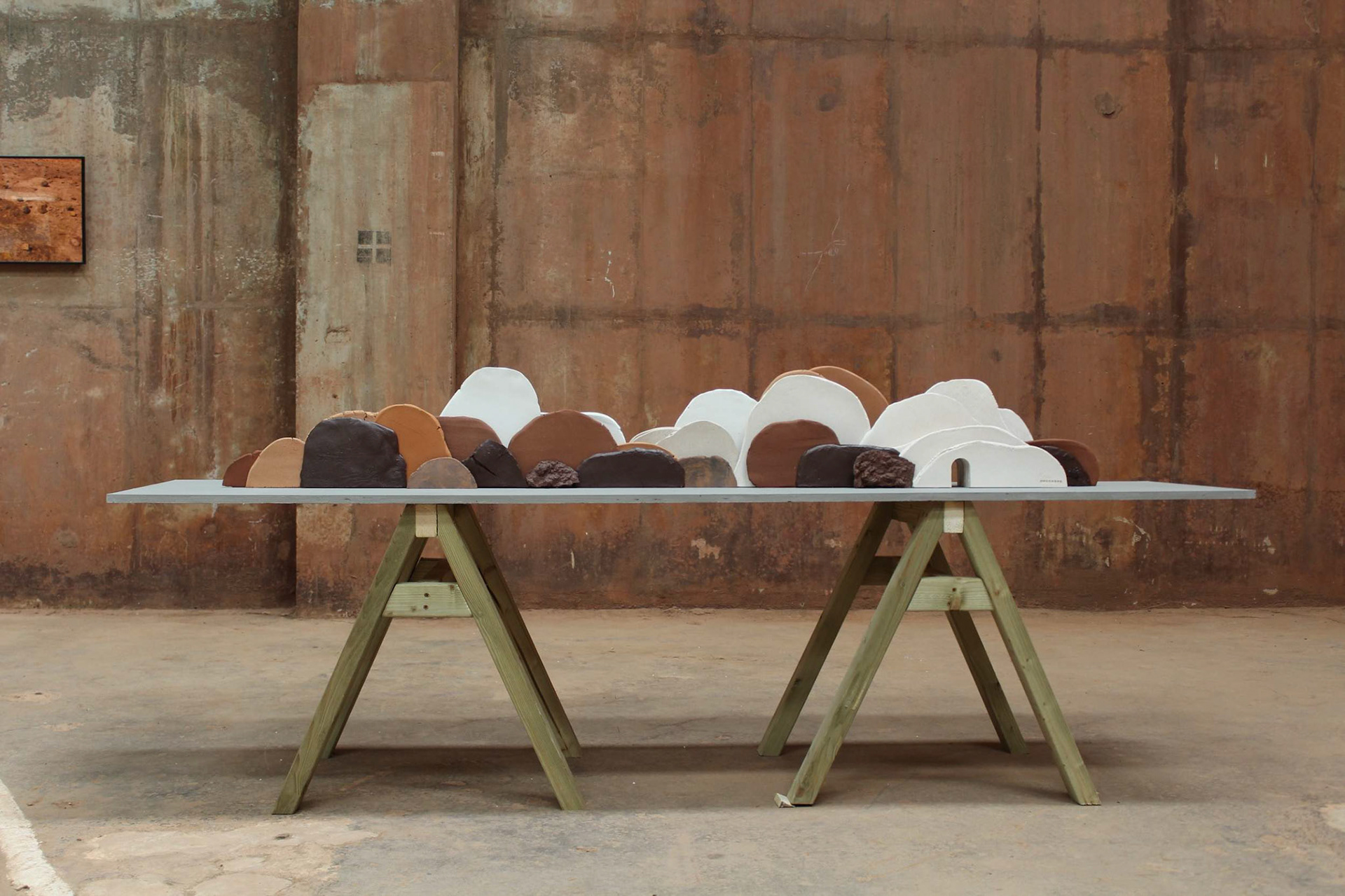
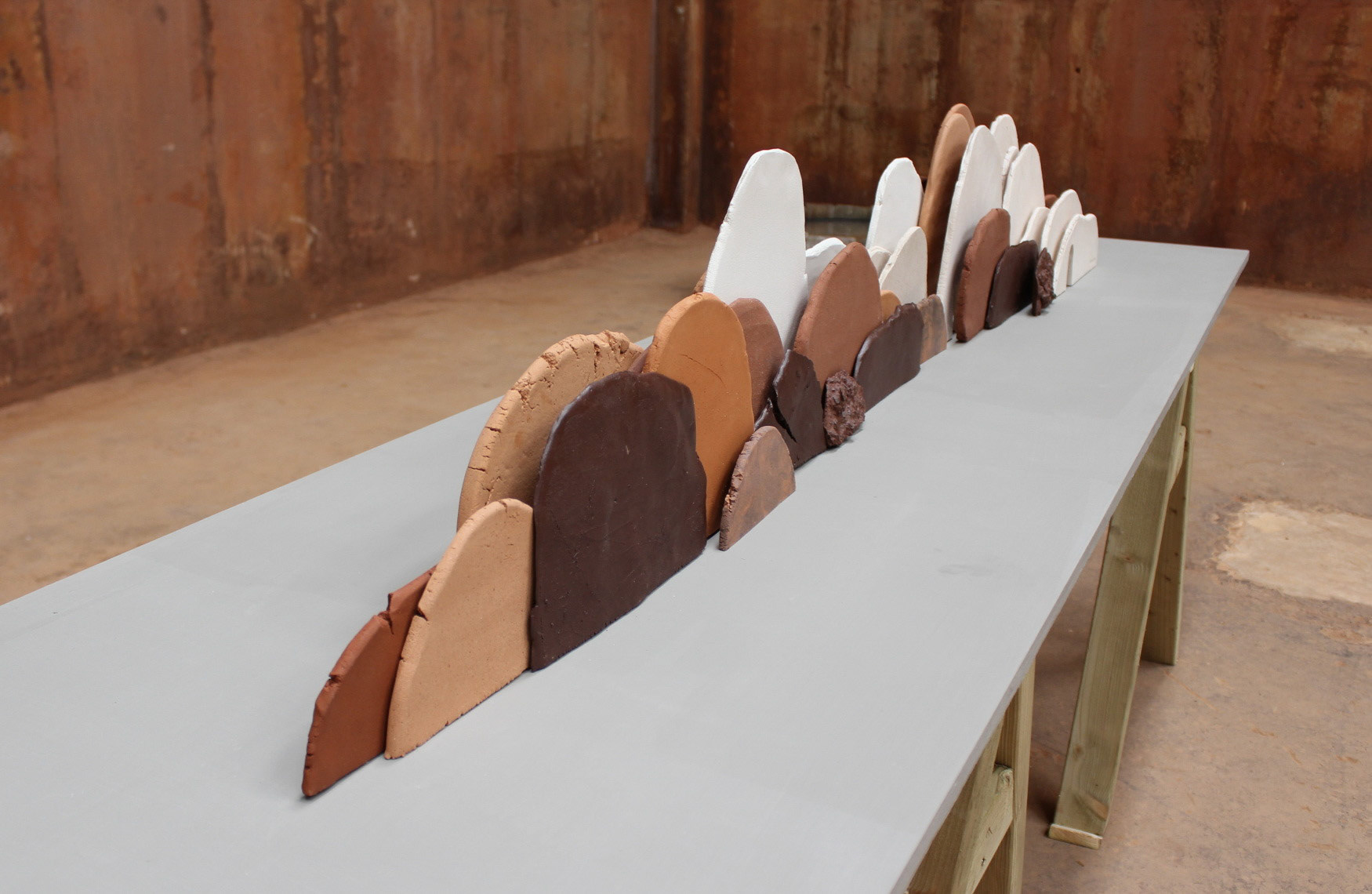
Film club
As part of the film club, a few Fine Art and Art History students put on, I went to the film showing of three of Hope Strickland's films. The films all focused on archival documentary practices in analogue and digital formats. It was inspiring to watch these films while thinking about the footage for my film. I will be visiting a Peak District archive soon, where I can look into archival footage and documents, which will enable me to gather more in-depth research about the importance of archives within a project.
Jonathan Boyd talk
Craft had the opportunity to join a talk from Jonathan Boyd, which, although not directly related to my practice, was useful to hear about various practices and contextualise my work in different ways. One of the areas his studies investigated was the capturing of place by various meanings and recordings. Using audio and visual recording to capture the language of a place, he is interested in how one captures primary research and where these recordings come from. This relates to my studies, as the main basis of my project is the investigation into the geology of the landscape, which my practice revolves around.


May Wild Studio Talk
I attended the talk by May Wild Studio that the art school was putting on, which was very insightful to hear about how a collaborative collective was formed and became successful. It was really interesting for me to hear about the community side of their practice, as ecological, outdoor communal art is a big part of the duo's work, and a big part of how they earn a living through their studio. I was able to talk to the artist after the talk, to get some advice about how she recommends starting out in community art projects. A useful tip she gave me was to look at projects being held in the suburbs of Manchester city, as the boroughs are often where most community-style projects take place.

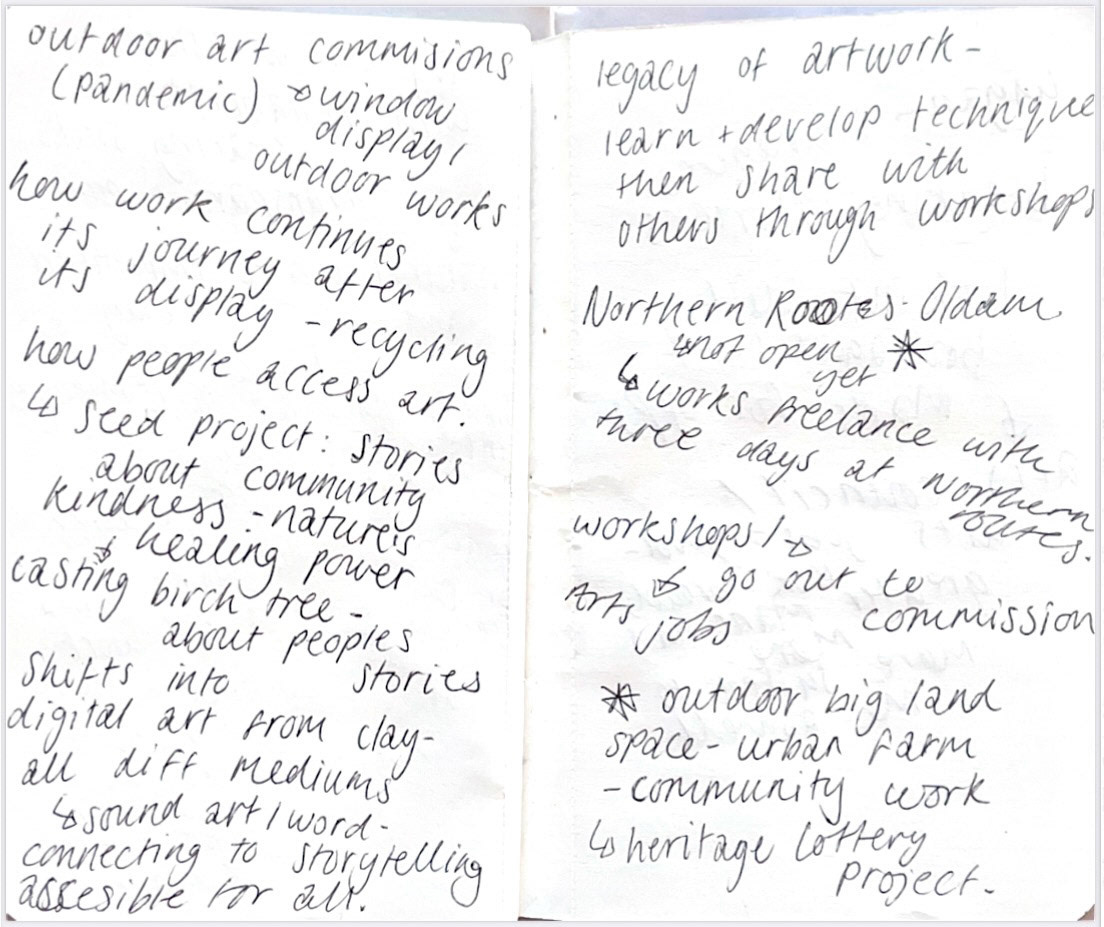

May Wild Studio workshops
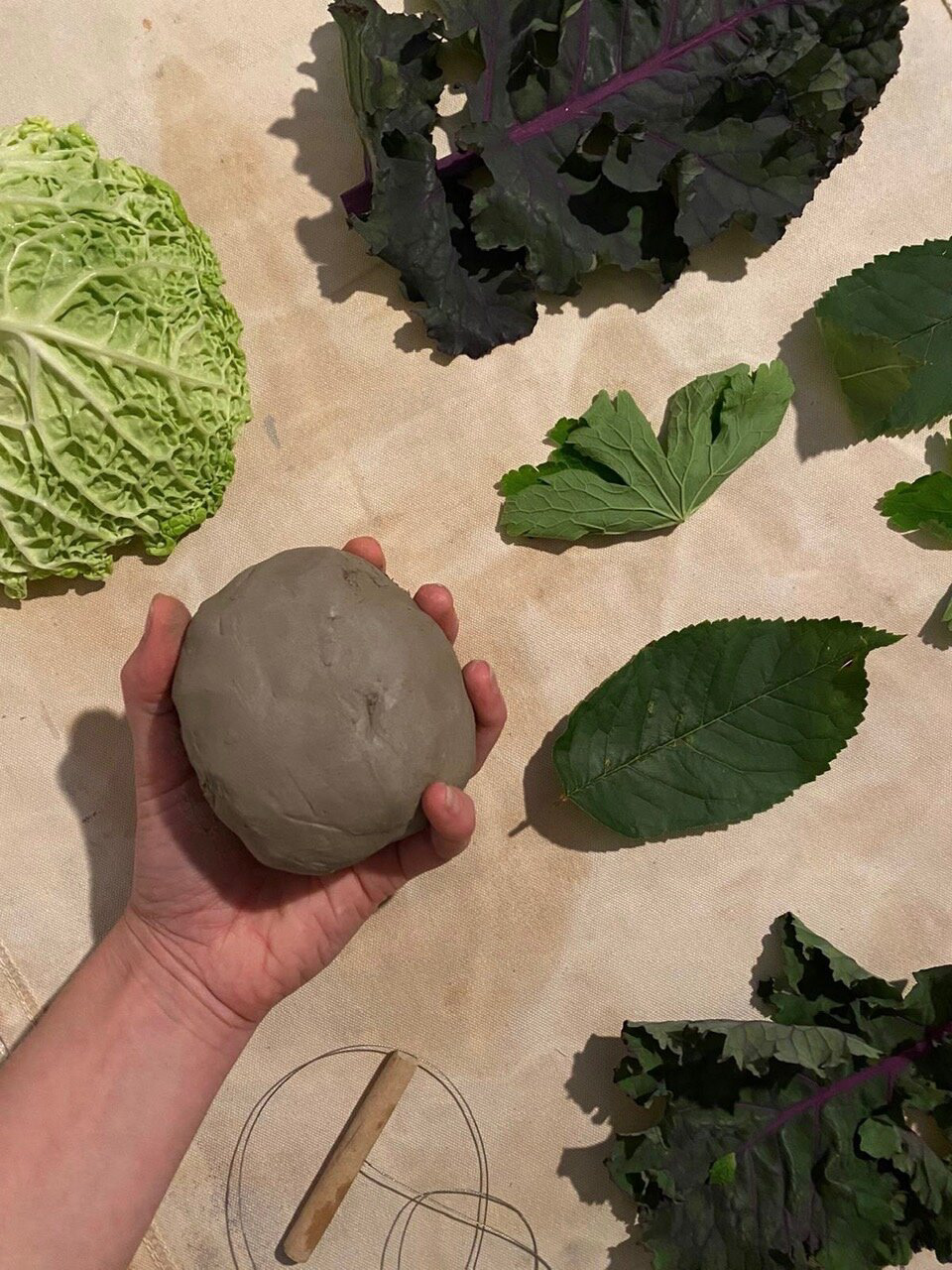
May Wild Studio workshops
Pricing
When considering the pricing of my practice, I have to consider many things due to the multidisciplinary depths of my work. As my work stretches across making, film, community and the possibility of workshops as a future source of income, it is hard for me to know exactly how to price myself. However, below, I have worked out costs based on the Arts Union England pay rate alongside guidance from artists working in similar fields.
The wage for a newly graduated artist is £216.63 per day. This excludes any equipment, travel costs, or any other external costs.
If I want to go into social practice, which I am considering for my future practice due to the opportunities of working in a community environment, this would be working on community projects over different time frames, with the possibility of multiple artists working together. Day rates vary depending on the consistency of the practice and how consecutive the project is.
Screenings are something which I am looking into as my practice follows the route of filmmaking for documentary and research purposes, alongside my physical making. Film screenings for gallery or cinema settings have flat rates depending on the film's length. These can also vary and can be negotiated depending on the setting for the screening.
There is also the potential for commissions as a form of income. Gabriella Rhodes offers commissions for her wall-based and freestanding ceramic objects, with prices starting at £500. Her prices increase due to the piece's scale required, the complexity of forms and the materials used. Rhodes uses foraged clays from her local area of North Wales. However, there is potential to use materials that are significant to the customer.
This way of working interests me as it brings the public into the work and provides a more personal approach to the work being created. Allowing the customer to work with the artist and collaborate more, especially with the personalised materials, leads to having a social practice and interaction between the artist and the customer. Due to my practice following the localities of specific areas and working with clay from that area to visualise and personify the ecologies of the area's distinctive qualities, it would be interesting to follow projects of gathering clay from locations with special meaning to different people, just as I have been doing throughout this year.
Workshops are also something I am considering as a potential source of income for my work style in the future. The nature of my practice lends itself to community workshops, sharing knowledge about the land and working sustainably and ecologically within the landscape. This year has been spent gathering the research and technicalities required to lead workshops. It has enabled me to start gathering the resources and specialities needed to start sharing my findings with others. Bringing this to the public will only come after extensive and in-depth research findings and knowledge-building from the projects I have worked on this year and beyond. As part of my collaboration project, which consists of internal walking workshops between the three of us working on the project, we are gaining the skills required to consider inviting the public to join us in paid workshops to continue these material findings of the land.
From my research into other practitioners who gain income from leading workshops, it interests me to see what they offer and at what price. The artist Suna Imre, based in Hampshire, led a smoke firing workshop at the start of this year. She advertised it on her Instagram, costing £245 for the workshop, all-inclusive. This cost covers a three-day workshop, teaching hand-building for making a vessel, refining and finishing techniques, and learning how to smoke-fire the vessels made. The places were limited to 6 people, and all materials were included. The artist will have received £1,470 for this workshop, for three days for a workshop of six people. Smoke-firing kilns can cost between £419 to over £1000, depending on how much equipment there is. There are also the costs that the artists will have had to spend on the materials and the clay. I think charging £245 per person for a three-day, all-inclusive workshop is a very generous price, especially for the type of workshop and skills being taught.
Greater Manchester Inspire Fund
I have been researching different freelancer funds that are on offer for after I graduate in order to keep my creative practice ongoing. Greater Manchester Combined Authority offer a creative fund worth £3000, which is put in place to support independent freelancers across photography, heritage projects and visual arts. Applicants from Greater Manchester are encouraged to apply for this and offer one-off development grants of between £500 and £2000 to "seed good ideas and sector development across Greater Manchester."
Longsight Community Arts Space
I am constantly becoming aware of open calls advertised on platforms such as Instagram. This is something which I have consistently tried to keep on track with, as I like to be in the know as much as possible about Greater Manchester's creative scene. Longsight Community Arts Space is a great initiative which offers lots of events and workshops for the local community, bringing more accessibility to the arts in Manchester.
In March, they advertised an Open Call for makers to "bring their creative projects to life" in the form of exhibitions, workshops or community gatherings. They offer free access to the arts space and support in shaping and promoting the arts project. This really engaged me, as my plans for the context of my future practice are based on community workshops and exhibition spaces led by me and my collaborator Abbie Fowler. As a lot of this term and year has been spent developing our wild clay walkshops, to contextualise our practice further, it is important for us to look out for any arts spaces and initiatives that welcome this type of working, and I believe the Open Call at Longsight is the type of thing that we would be suited to. Unfortunately, the timings and specific deadlines for this open call didn't work with us due to university commitments and deadlines, however, it is something that I will be looking out for after the degree show.
Altogether Otherwise
The community-led creative hub Altogether Otherwise is a Manchester events organisation which I am very interested in approaching. After discussing with Abbie, who has friends who are a part of the creative scene at Altogether Otherwise, we have been told that the style of workshops that we are aiming to lead will be well-suited to this community. As we have spent this term developing our workshops as part of the Holden Gallery commissions, we have gained more experience in our aims and feel like we are getting more prepared to facilitate these workshops to the wider public. I will be attending more events and workshops myself at Altogether Otherwise in order to get a better feel of the space and the community that is there.
Contextualising practice
When thinking about the context in which I see my practice, I aim to have a workshop-led, community arts practice, and would most likely sell my own work for exhibition and installation, rather than selling individual, batch pieces of work. As my practice does not fit into traditional, batch-produced products for the market, it is harder for me to consult a specific price that I sit within. I see the context of my work as an ongoing research project, one which is being constantly investigated and developed.
I see the context of my practice being in an exhibition space. Especially for the work that I am completing with my collective Common Ground, it is our intention to further our practice after graduation and continue our work in the context of showing our installation findings in exhibition spaces.
Exhibition Fees
I have researched the costs of having my work in exhibitions, and how it is suitable to go about this. A lot of exhibitions, especially start-up ones, expect their artists to exhibit for free, and it can be quite hard to negotiate the cost that I, as the exhibitor, should charge.
Exhibition fee calculations for a recently graduated, emerging artist:
With the assistance of AI, I have calculated my costs for having my work in exhibitions and leading both half-day and full-day workshops. This information is based on my practice, using wild clay ceramics, film and installations. I am aware that using AI is not the most reliable source. However, I have backed up these prices with the Artists Union England, which says the same amounts and guidance.
Due to being an emerging artist, the calculations are lower than if I had more experience. But, through my work and research, I have come to the conclusion that, if I were to offer my practice to go for exhibitions or workshops, which is where my context of my practice falls, then I would charge:
Exhibition Fee: £200 per day for 5 days = £1,000
Workshop rates: £200-£300 per day



